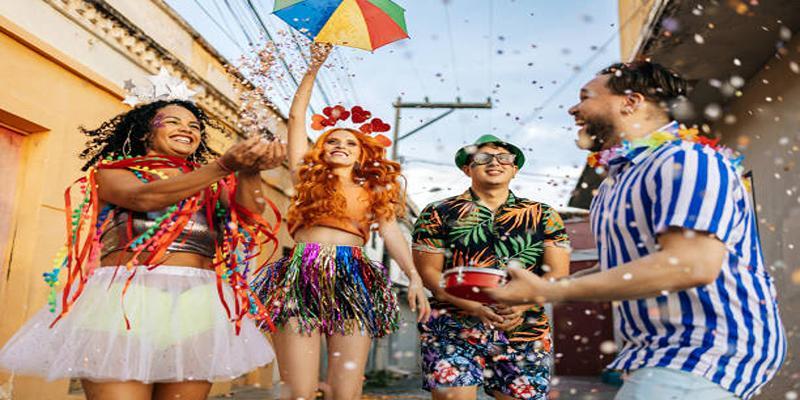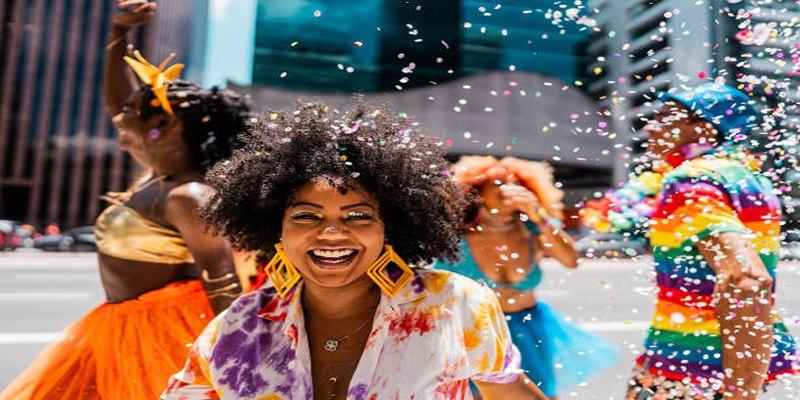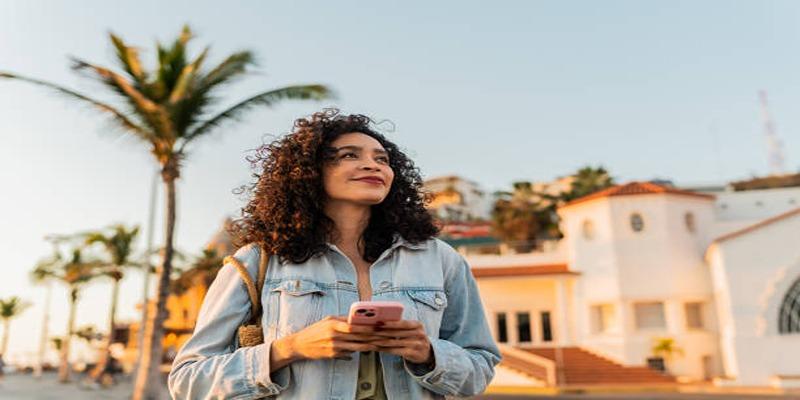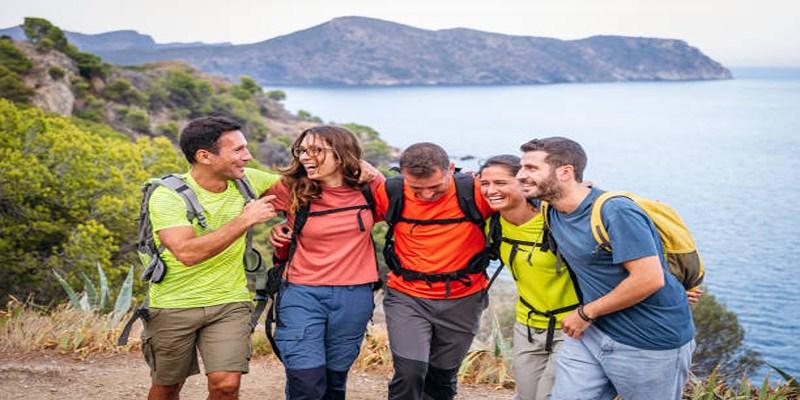Carnaval in Brazil is full of rhythm, color and bliss and transforms cities into an epic party. Rio with its famous parades and Salvador with electric street parties just to name a few, you will find a different feast in every city. Eat, drink, samba, dance the frevada with the giant blocos, and feel the heart of Brazilian culture. This guide helps you find the perfect Carnaval for your style—get ready to celebrate!

The Carnaval of Rio de Janeiro is the most popular fiesta celebration in the world with around two million persons visiting every year to see unadulterated theatrical magic. The jewel in the crown is the Sambadrome parade, as the best samba schools make parades with floats four stories tall and costumes costing thousands of dollars apiece.
Twelve samba schools perform the suggestive presentations, inside the Sambadrome Marquês de Sapucaia, during two nights. The school has 82 minutes to narrate their story through music, dance and an exhibition of visual arts. Prices start with cheaper bleachers up to large-scale boxes, and each of the vantage points has spectacular views of this cultural show.
Outside of the conceptual processions, the street blocos of Rio form the soul of Carnaval. More than 500 mobile street parties take over neighbourhoods, such as Santa Teresa, Ipanema and Lapa. The Cordao de Bola Preta gathers around two million partygoers to the Rio downtown and Banda de Ipanema introduces glitzy drag queens and beach atmosphere to the renowned Ipanema neighborhood.
The Carnaval by Salvador beats with African beats and the abundant multicultural vitality of Brazil. The 6-day festival turns the colonial city into an outdoor carnival, complete with trio elétricos (sound trucks) and axe music that have the crowds literally dancing dawn to dinner.
Huge trucks with sound rigs roam across Salvador and the coastal regions, and popular Brazilian musicians are singing on top of them. The fans may either attend the party by purchasing abadasses (official t-shirts), which provide access to roped-off sections around each of the trio eléctricos, or they may just dance in the streets as pipoca (popcorn people).
The Sally carnival keeps firm ties with the Afro-Brazilian culture by means of organizations such as Olodum and Ilê Aiyê which commemorate Black science and sensibility. These groups bring the Carnaval to a level where its cultural identity can be expressed and where social consciousness is made enjoyable.

Brazil has the purest and traditional experience of Carnaval in the twin cities of Recife and Olinda. In this case, large puppets in the form of bonecos perform with the crowd, accompanied by frevo music making people energized.
Such a combination of circus-like acrobatics and jazz-improvisation is Frevo, a uniquely Brazilian art form. Dancers are using colored umbrellas and do weightless into the jump dances while brass bands play the music. It is indeed hypnotizing to watch professional frevo dancers strut their stuff through busy streets in perfect rhythm.
The UNESCO World Heritage colonial architecture in Olinda offers a beautiful setting to the Carnaval celebrations. Hundreds of blocos crowd its small cobblestone streets and the city becomes one giant freewheeling celebration. The Galo da Madrugada parade in Recife is considered the official beginning of the festivities and it holds the Guinness World Record of largest Carnaval parade.
The Magic Island of Brazil mixes both gorgeous beaches and the colorful Carnaval to provide a less serious version of the huge city celebrations. Florianopolis appeals to younger populations that enjoy dividing their time between fun and beach activities.
Carnaval parties are celebrated on beach and outdoor locations where electronic music is mixed with Brazilian traditional music by DJs. The ocean and warm weather coupled with the celebratory ambience make it impossible to resist developing a party atmosphere. During Carnaval week popular swimming beaches such as the Jurerê Internacional turn into large outdoor clubs.
Florianopolis spreads the festivity far behind the actual Carnaval dates, as the warm-up events begin in January and the after parties go on well into March. The longer season gives visitors a chance to sample Brazilian festival culture but also partake of the natural beauty, surfing and outdoor behaviour of the island.
The capital of Minas Gerais has become one of the largest Carnaval destinations that mix old-fashioned Brazilian celebrations with the modern urban life. The blocos within the city invite a million plus attenders to the street parties across the metropolitan region.
The Carnaval of Belo Horizonte strikes the right balance between honoring cultural samba and marchinha music and new ways of celebrating on the streets. The city is now known by blocos with themes that range all the way to old Brazilian music and modern pop culture allusions.
The carnival celebrate alternates every year according to the Catholic calendar or generally it is in February-March. Savers can book 6 months ahead or later because prices will be astronomical and availability will be scarce in February during the Carnaval season.
Be ready to deal with people, heat, and energy 24/7. Easy shoes are required because you will be dancing and walking on different surfaces many hours. Hydrate, shield against the sun and carry small valuables out of reach.
The customs are supposed to be respected and joyfully join the festivities. Carnaval is a festival of inclusion and happiness, therefore, have fun together. It will help you improve your experience, learning some Portuguese phrases and getting to know Brazilian social practices.
The Carnaval in Brazil is a delight to all the travelers and it starts with the patriotic shows in Rio, continues with the colorful heritage of Salvador and old Cape Halls in Recife. All destinations present a different prism through which Brazilian culture and memorable celebrations can be lensed. Choose the partying that interests you most, in advance, and light-weight yourself. Prepare to be engulfed by an experience of Brazilian music, dance, and positivity in the most carnival season of the year!
 TOP
TOP
Curious about when to claim your Social Security benefit? Learn how age, health, income, and other personal factors influence this important decision and shape your retirement future
 TOP
TOP
The joys of spontaneous travel with tips for unplanned adventures, packing light, and connecting with locals for unforgettable experiences.
 TOP
TOP
Discover thrilling day trips near Cape Town, featuring stunning landscapes, cultural experiences, and adventure for every traveler.
 TOP
TOP
Discover the truths and misconceptions about medical research studies in this insightful article.
 TOP
TOP
The benefits of outdoor activities for improving physical and mental well-being.
 TOP
TOP
Discover the truth about cold weather and its link to sickness in this science-based article.
 TOP
TOP
Identify emotional clutter and discover practical ways to declutter your mind for clarity and peace.
 TOP
TOP
Debunking 7 common myths about Alzheimer’s and dementia for clearer understanding.
 TOP
TOP
Untreated GERD can cause esophagus damage, Barrett’s esophagus, dental erosion, and cancer. Learn symptoms, risks, and why early treatment matters for health.
 TOP
TOP
Aphantasia affects mental imagery, memory, and creativity. Explore its causes, cognitive impacts, coping strategies, and real-life adaptations for navigating life without a mind's eye.
 TOP
TOP
Mental health shapes our well-being, productivity, and equality. Learn why it matters for everyone and discover ways to build stronger support systems.
 TOP
TOP
Learn to identify whether your eyelid bump is a stye or a chalazion, understand the causes and symptoms, and explore effective treatment options for better eye health and comfort.